The BSA Shooting Sports Manual provides comprehensive guidelines for safe and age-appropriate shooting activities, ensuring a fun and educational experience for youth participants nationwide.
1.1 Purpose and Scope of the Manual
The BSA Shooting Sports Manual is designed to provide detailed guidelines for conducting safe and effective shooting sports programs within the Boy Scouts of America. Its purpose is to ensure that all activities are age-appropriate, supervised, and aligned with BSA safety standards. The manual serves as a primary resource for leaders, instructors, and participants, covering essential protocols, training requirements, and best practices for various shooting disciplines. It emphasizes safety, skill development, and adherence to BSA policies, ensuring a positive and educational experience for all involved.
1.2 Importance of Safety in Shooting Sports
Safety is paramount in BSA shooting sports, as it ensures the well-being of participants and bystanders. Adhering to strict protocols minimizes risks and fosters a responsible environment. Proper training, supervision, and equipment maintenance are critical to preventing accidents. The manual emphasizes the importance of following established safety guidelines, such as appropriate shooter-to-instructor ratios and emergency preparedness. By prioritizing safety, BSA programs teach participants not only shooting skills but also discipline, respect, and accountability, creating a positive and secure experience for all involved.
1.3 Overview of BSA Shooting Sports Programs
BSA shooting sports programs offer youth engaging, age-appropriate activities emphasizing safety, skill development, and fun. The manual covers rifle, shotgun, archery, and air rifle shooting, tailored for Cub Scouts, Boy Scouts, and Venturers. These programs promote teamwork, discipline, and responsibility while fostering an appreciation for firearms and archery. Certified instructors ensure a safe learning environment, guiding participants through progressive skill levels. The curriculum also introduces new technologies, such as PCP air rifles, enhancing the educational and competitive aspects of shooting sports within Scouting.
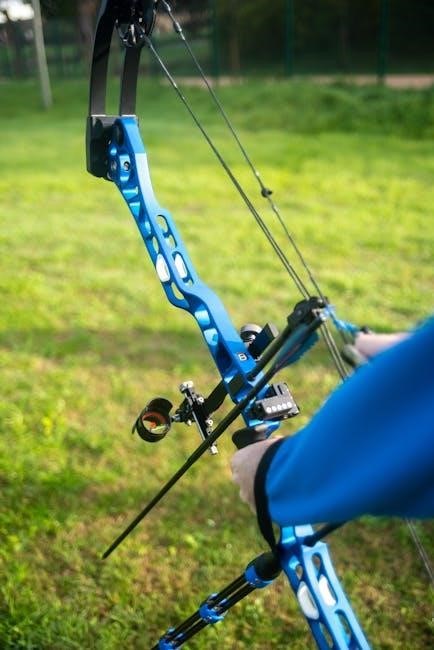
Safety Guidelines and Protocols
BSA shooting sports emphasize strict safety protocols, including proper firearm handling, range rules, and emergency preparedness, ensuring a secure environment for all participants.
2.1 Range Safety Rules and Regulations
Range safety rules are critical for ensuring a secure environment. Key regulations include always pointing firearms downrange, keeping fingers off triggers until ready to shoot, and wearing eye and ear protection. Shooters must remain supervised at all times, and only authorized personnel may handle firearms. Proper backstops and target placement are mandatory to prevent stray shots. All participants must adhere to range commands and signaling systems. Safety briefings are required before any shooting activity, and violations of protocols may result in immediate dismissal from the range.
2.2 Proper Handling and Storage of Firearms
Proper handling and storage of firearms are essential for safety and longevity. Always keep firearms unloaded when not in use and store them in a dry, secure location. Use gun cases or safes to prevent unauthorized access. Ensure the muzzle is pointed in a safe direction, and never touch the trigger until ready to shoot. Regularly inspect firearms for damage or wear. Store ammunition separately from firearms, and follow local regulations for storage. Proper maintenance, including cleaning and lubrication, ensures optimal performance and longevity of the firearm.
2.3 Emergency Procedures and First Aid
In case of an accident, remain calm and follow established protocols. Call 911 immediately for severe injuries. Ensure the area is safe and secure to prevent further incidents. Administer first aid, such as applying direct pressure to wounds or using tourniquets if trained. Keep a first aid kit on hand with supplies for treating injuries common in shooting sports, like minor cuts or burns. Document incidents thoroughly and report them to BSA authorities. Regular training in first aid and emergency response is crucial for all participants and staff. Prevention and preparedness are key to ensuring safety.
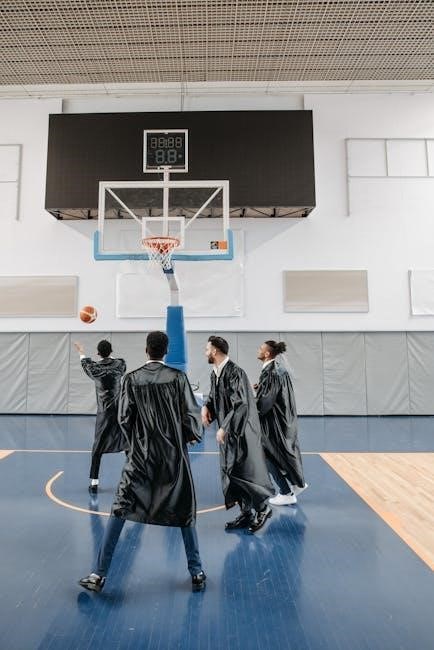
Shooting Disciplines Covered in the Manual
The manual covers rifle shooting, shotgun techniques, archery, and air rifle/pistol disciplines, providing detailed guidance for each to ensure safe and effective participation in BSA programs.
3.1 Rifle Shooting Basics
Rifle shooting basics emphasize safety, proper handling, and fundamental marksmanship skills. Participants learn stance, grip, and sight alignment to improve accuracy. The manual outlines step-by-step techniques for loading, aiming, and firing, ensuring a solid foundation for beginners. Safety protocols, such as keeping the muzzle pointed downrange and fingers off the trigger until ready to shoot, are stressed. Training progresses from basic to advanced skills, with instructors guiding youth through practice sessions. The goal is to build confidence and competence in rifle handling while adhering to BSA safety standards and guidelines.
3.2 Shotgun Shooting Techniques
Shotgun shooting techniques focus on proper stance, grip, and alignment to effectively hit moving targets. The manual teaches methods like the “swing through” and “quick kill” for clay pigeons. Safety is paramount, with emphasis on muzzle control and proper loading procedures. Youth learn to handle different shotgun types, including break-action and semi-automatic models. Instruction covers pre-shot preparation, follow-through, and post-shot safety checks. The goal is to develop proficiency and enjoyment in shotgun sports while maintaining BSA’s high safety standards and guidelines for all participants.
3.3 Archery and Its Role in BSA Programs
Archery is a cornerstone of BSA shooting sports, emphasizing precision, focus, and patience. The manual outlines age-appropriate instruction, starting with basic bow handling and progressing to advanced techniques. Safety is a priority, with strict protocols for equipment inspection and range setup. Programs are designed to foster teamwork and personal growth, aligning with BSA’s values. Archery activities are structured to accommodate all skill levels, from Cub Scouts to Venturers, ensuring a fun and educational experience while promoting a lifelong appreciation for the sport.
3.4 Air Rifle and Pistol Shooting
Air rifle and pistol shooting are popular disciplines within BSA programs, offering youth a safe introduction to precision marksmanship. These activities emphasize control, focus, and proper technique. The manual outlines specific guidelines for handling and maintaining air-powered firearms, ensuring safety and optimal performance. Participants learn fundamental shooting skills, progressing from basic target practice to more advanced competitions. Air rifle and pistol shooting foster discipline and responsibility, aligning with BSA’s commitment to developing character and confidence in young participants through structured, enjoyable experiences.
Equipment and Maintenance
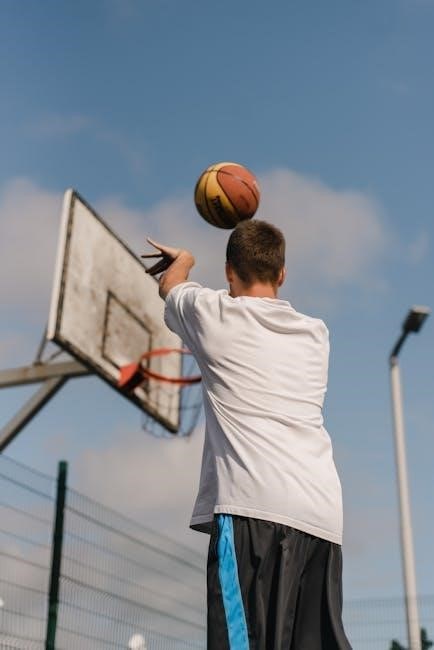
This section covers essential equipment for shooting sports, including firearms, optics, and accessories, with detailed maintenance tips to ensure safety, accuracy, and optimal performance for all participants.
4.1 Firearms and Accessories Overview
This section details the types of firearms and accessories used in BSA shooting sports, including rifles, shotguns, air guns, and archery equipment. It emphasizes the importance of age-appropriate firearms selection to ensure safety and suitability for participants; Accessories such as scopes, slings, and targets are also discussed, along with their proper use and maintenance. The manual highlights BSA-approved models, such as the BSA Scorpion Tactical and Brigadier, ensuring equipment aligns with safety standards and program goals. Proper care and handling are stressed to maintain performance and longevity.
4.2 Maintenance Tips for Optimal Performance
Regular cleaning and lubrication of firearms are essential for optimal performance and longevity. The manual recommends using approved cleaning solvents and lubricants to prevent corrosion and wear. Proper storage in dry, secure locations is also emphasized to maintain functionality. Additionally, routine inspection of barrels, chambers, and firing mechanisms ensures safety and accuracy. Archery equipment, such as bows and arrows, requires similar care, with checks for string wear and arrow integrity. Neglecting maintenance can lead to equipment failure, making consistent upkeep a priority for all BSA shooting sports activities.
4.3 Choosing the Right Optics for Accuracy
Selecting the appropriate optics is crucial for precision in shooting sports. Scopes with adjustable magnification are ideal for rifles, while shotguns benefit from simpler, fast-targeting optics. Archery equipment may use sighting aids like pins or magnifying lenses. Optics should align with the shooter’s skill level and discipline, ensuring clarity and durability. Proper mounting and zeroing are essential for accuracy. The manual emphasizes matching optics to the firearm’s capabilities and the shooter’s needs, enhancing performance across all BSA shooting sports disciplines while maintaining safety and consistency.
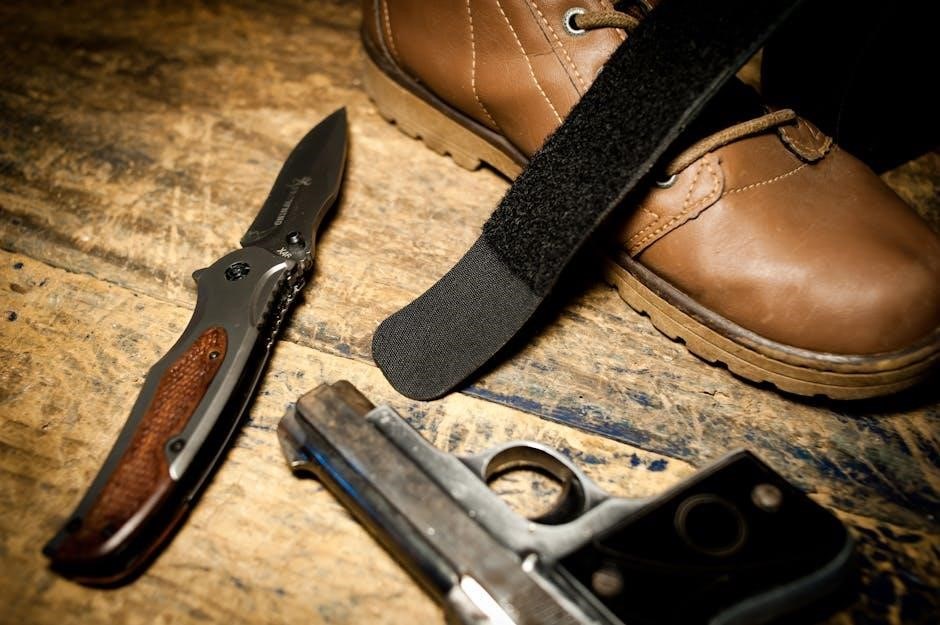
Training and Certification
BSA offers certifications like NRA Range Safety Officer and USA Archery Instructor to ensure safe, skilled instruction in shooting sports, promoting excellence and safety for all participants.
5.1 NRA Range Safety Officer Certification
The NRA Range Safety Officer Certification is a critical component of BSA’s training programs, ensuring that instructors can manage ranges safely and effectively. This certification focuses on teaching safety protocols, emergency procedures, and best practices for supervising shooting activities. Participants learn to identify and mitigate risks, ensuring a secure environment for all participants. The training emphasizes practical scenarios and hands-on experience, preparing officers to handle various situations confidently. By requiring this certification, BSA ensures that all shooting sports activities are conducted with the highest standards of safety and professionalism.
5.2 USA Archery Instructor/Coach Certification
The USA Archery Instructor/Coach Certification is a cornerstone of BSA’s archery programs, equipping leaders with the skills to teach safe and effective archery techniques. This certification focuses on proper equipment use, shooting form, and range safety, ensuring a positive experience for youth participants. Coaches learn to adapt instruction for varying skill levels and ages, fostering confidence and skill development. The program emphasizes hands-on training and scenario-based learning, aligning with BSA’s commitment to safety and excellence in shooting sports programs.
5.3 BSA-Specific Training Programs
BSA-specific training programs are designed to ensure leaders and instructors are well-prepared to deliver safe and engaging shooting sports experiences. These programs emphasize age-appropriate instruction, hands-on learning, and continuous skill development. They cover essential topics like range safety, equipment maintenance, and teaching methodologies tailored to BSA’s youth-focused mission. By completing these programs, participants gain the confidence and expertise to lead successful shooting sports activities, fostering a culture of safety and enjoyment for all involved. These trainings are regularly updated to reflect best practices and evolving standards in shooting sports education.
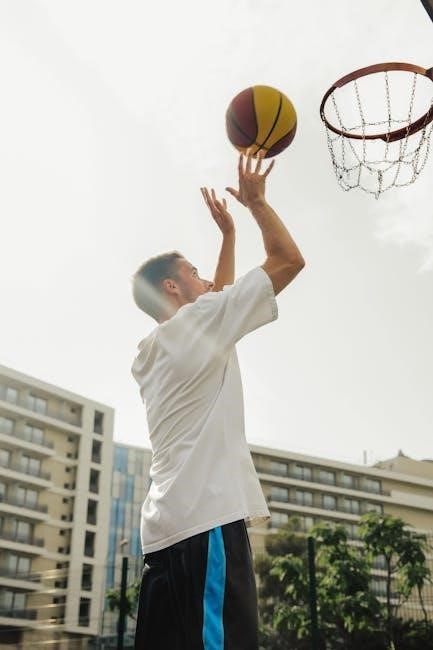
Age-Appropriate Shooting Sports Programs
BSA offers shooting sports tailored to different age groups, ensuring activities are safe, engaging, and skill-appropriate. Programs are designed to foster teamwork, discipline, and outdoor enjoyment while emphasizing safety.
6.1 Cub Scout Shooting Sports Guide
The Cub Scout Shooting Sports Guide is a comprehensive resource for leaders and volunteers, ensuring age-appropriate activities and safety. Designed for younger participants, it focuses on basic skills and fun. Activities include archery and BB gun shooting, tailored to Cub Scouts’ developmental levels. The guide emphasizes safety protocols, proper supervision, and skill progression. It supports the development of confidence, teamwork, and sportsmanship while introducing youth to shooting sports in a controlled environment. This program aligns with BSA’s mission to foster character growth and outdoor education through engaging activities.
6.2 Boy Scout and Venturing Programs
Boy Scout and Venturing programs offer advanced shooting sports opportunities, emphasizing skill mastery and safety. These programs build on foundational knowledge, introducing Scouts to rifle, shotgun, and archery disciplines. Participants learn advanced techniques, safety protocols, and leadership skills. Venturing programs often include specialized training and competitions, fostering a deeper appreciation for shooting sports. Safety remains a priority, with certified instructors guiding activities. These programs encourage personal growth, teamwork, and responsible firearm handling, aligning with BSA’s mission to prepare youth for life’s challenges through engaging outdoor experiences.
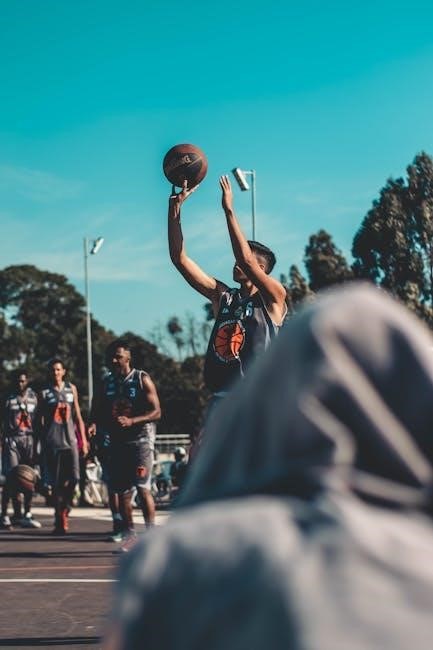
Range Operations and Management
Effective range operations ensure safety, efficiency, and adherence to BSA and NRA standards. Proper management includes shooter supervision, equipment maintenance, and organizing events to promote skill development and fun.
7;1 Setting Up a Safe Shooting Range
Setting up a safe shooting range involves careful planning and adherence to BSA guidelines. Ensure proper backstops, clear shooting lanes, and designated safety zones. Install appropriate signage and barriers to prevent unauthorized access. Conduct regular inspections of equipment and terrain to identify hazards. Supervise shooters at all times, maintaining the recommended safety ratio of range staff to participants. Establish clear communication protocols and emergency procedures. Regularly review and update range setup to comply with current BSA and NRA standards, ensuring a secure environment for skill development and enjoyment of shooting sports activities.
7.2 Managing Shooters and Instructors
Effective management of shooters and instructors is crucial for a safe and organized range experience. Ensure all instructors hold current certifications, such as NRA Range Safety Officer or USA Archery Instructor. Assign instructors based on shooter skill levels and discipline expertise. Maintain strict supervision ratios as outlined in the BSA Shooting Sports Manual. Conduct regular checks to ensure shooters follow safety protocols and handle equipment properly. Encourage open communication and provide constructive feedback to improve performance. Prepare instructors to handle emergencies and ensure all participants understand range rules and safety procedures before commencing activities.
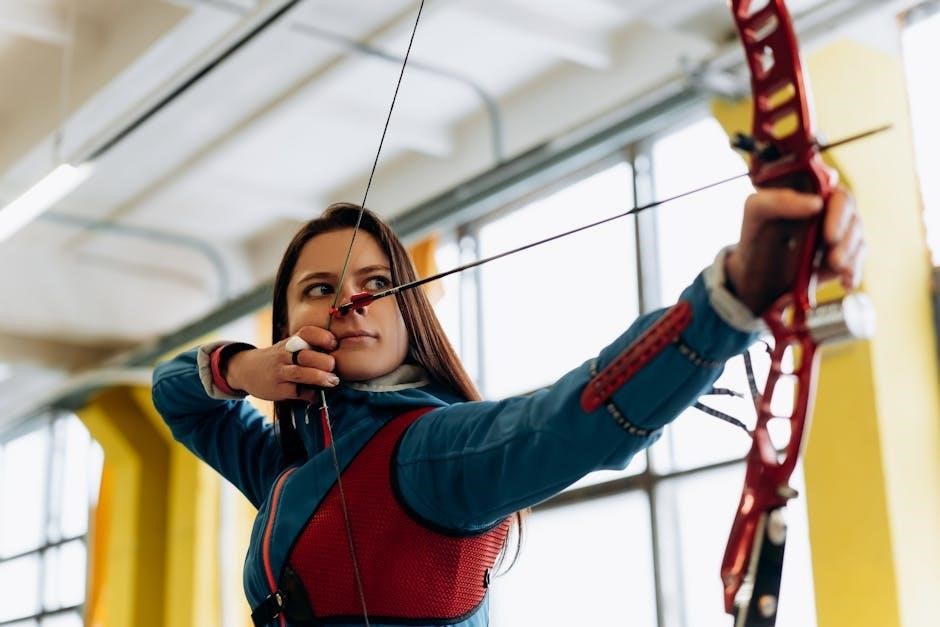
National Range and Target Activities Manual
The National Range and Target Activities Manual is the official guide for BSA shooting sports, outlining safety, rules, and best practices for target shooting and range activities.
8.1 Key Updates in the 2024 Edition
The 2024 Edition of the National Range and Target Activities Manual introduces updated safety protocols, expanded age-specific guidelines, and new sections on equipment maintenance. It includes revised procedures for range setup and operation, ensuring compliance with current standards. Additional resources for instructors and participants have been added, focusing on best practices for teaching shooting sports. The manual also incorporates feedback from previous editions, enhancing clarity and accessibility for both new and experienced shooters. These updates reinforce the BSA’s commitment to safety and excellence in shooting sports programs.
8.2 Relevance to BSA Shooting Sports
The National Range and Target Activities Manual is integral to BSA shooting sports, providing standardized guidelines for safe and structured programs. It aligns with BSA’s mission to teach youth about firearms, archery, and other shooting disciplines responsibly. The manual ensures consistency across all BSA programs, emphasizing safety, skill development, and age-appropriate activities. By following its guidelines, instructors and volunteers can create engaging, educational experiences that foster confidence and character in participants. This alignment ensures BSA shooting sports remain a cornerstone of Scouts’ skill-building and outdoor education.
Historical and Competitive Aspects
The BSA shooting sports program has a rich history, fostering marksmanship and safety. It offers competitive opportunities through national events and recognition programs for skilled youth participants.
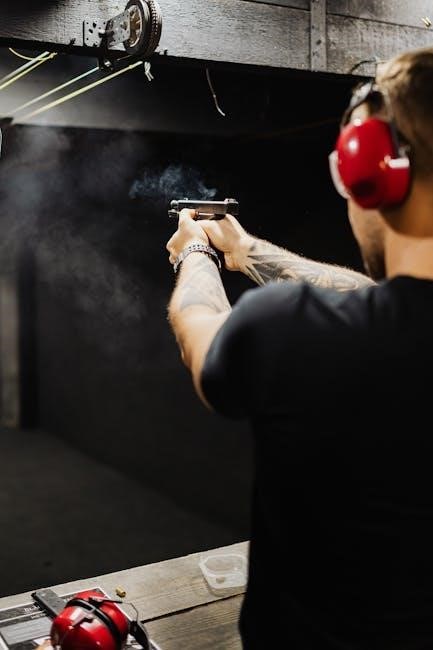
9.1 History of Shooting Sports in BSA
The Boy Scouts of America (BSA) has a long-standing tradition of promoting shooting sports, dating back to the early 20th century. Originally focused on rifle marksmanship, the program evolved to include archery, shotgun, and air rifle activities. Safety and skill development have always been central to its mission. The BSA Shooting Sports Manual was first introduced to standardize practices nationwide. Over the years, it has been updated to reflect modern techniques and equipment, ensuring relevance and safety for youth participants. The 2024 edition emphasizes age-appropriate training and competitive opportunities, inspiring responsibility and teamwork among Scouts.
9.2 Competitive Shooting Opportunities
The BSA offers various competitive shooting opportunities, fostering skill development and sportsmanship. National events and local competitions provide Scouts with platforms to showcase their marksmanship. Programs are tailored to different age groups, ensuring age-appropriate challenges. These events emphasize safety, teamwork, and personal growth. Participation in competitive shooting sports aligns with the BSA’s mission to build character and confidence. The 2024 manual highlights updated guidelines for these competitions, ensuring they remain engaging and safe for all participants.
The BSA Shooting Sports Manual emphasizes safety, skill development, and character building through structured programs, inspiring youth to engage in shooting sports responsibly and confidently.
10.1 Final Thoughts on BSA Shooting Sports
BSA Shooting Sports foster discipline, responsibility, and camaraderie, offering youth a structured path to master marksmanship skills while emphasizing safety and ethical practices. The programs are designed to be inclusive, catering to various age groups and skill levels, ensuring a positive experience for all participants. By adhering to the guidelines in the manual, Scouts and leaders can ensure a safe and enjoyable environment, promoting personal growth and a lifelong appreciation for shooting sports.
10.2 Encouragement for Participation
Participating in BSA Shooting Sports offers youth and adults alike the opportunity to develop marksmanship skills, build confidence, and foster teamwork in a safe, structured environment. These programs are designed to be engaging and inclusive, allowing participants of all skill levels to grow and succeed. By joining, individuals can make lasting friendships, challenge themselves, and create memorable experiences while learning valuable life skills. Encourage everyone to take part and embrace the camaraderie and personal growth that BSA Shooting Sports provides.
